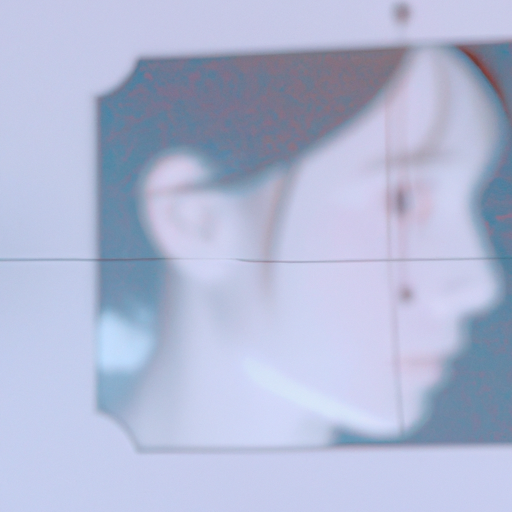
-
Table of Contents
- Finding Zen: Japanese Aesthetics in Minimalist Design
- The Essence of Japanese Aesthetics
- Minimalism and Japanese Aesthetics
- 1. Simplicity and Functionality
- 2. Natural Materials and Textures
- 3. Negative Space and Balance
- Case Studies: Japanese Minimalism in Practice
- 1. The Tokyo Olympic Stadium
- 2. Muji Hotels
- The Benefits of Minimalist Design
- 1. Reduced Stress and Clutter
- 2. Increased Focus and Productivity
- 3. Sustainable Living
- Summary
Finding Zen: Japanese Aesthetics in Minimalist Design

Minimalist design has gained significant popularity in recent years, with its clean lines, simplicity, and focus on functionality. One of the key influences behind this design philosophy is Japanese aesthetics, which emphasize the beauty of simplicity and the pursuit of Zen. In this article, we will explore the principles of Japanese aesthetics and how they have shaped minimalist design, providing valuable insights into creating harmonious and serene spaces.
The Essence of Japanese Aesthetics
Japanese aesthetics are deeply rooted in the country’s rich cultural heritage and philosophy. The principles of simplicity, asymmetry, and naturalness are at the core of Japanese design, reflecting the Zen Buddhist belief in finding beauty in the ordinary and the imperfect.
One of the fundamental concepts in Japanese aesthetics is “Wabi-Sabi,” which celebrates the beauty of imperfection, transience, and simplicity. Wabi-Sabi encourages us to appreciate the natural cycle of growth and decay, finding beauty in the weathered, aged, and imperfect. This philosophy has greatly influenced minimalist design, as it embraces simplicity and rejects excessive ornamentation.
Minimalism and Japanese Aesthetics
Minimalist design draws inspiration from Japanese aesthetics, incorporating its principles into various aspects of interior design, architecture, and product design. Let’s explore how Japanese aesthetics have influenced minimalist design:
1. Simplicity and Functionality
Minimalist design prioritizes simplicity and functionality, focusing on the essential elements while eliminating unnecessary clutter. This principle aligns with the Japanese aesthetic of “Kanso,” which emphasizes simplicity and the elimination of the non-essential. By removing excess decoration and embracing clean lines, minimalist design creates a sense of calm and tranquility.
For example, the iconic designs of Japanese architect Tadao Ando showcase the power of simplicity. His minimalist buildings, such as the Church of the Light in Osaka, feature clean lines, open spaces, and a limited color palette, creating a serene and contemplative atmosphere.
2. Natural Materials and Textures
Japanese aesthetics value the use of natural materials and textures, such as wood, stone, and paper. These materials not only bring a sense of warmth and authenticity but also connect the design to its natural surroundings. Minimalist design often incorporates these elements, creating a harmonious relationship between the built environment and nature.
For instance, the Muji brand, known for its minimalist products, embraces natural materials in its designs. Muji’s furniture and home accessories are often made from wood, bamboo, and other sustainable materials, reflecting the Japanese aesthetic of “Shizen,” which means naturalness.
3. Negative Space and Balance
Japanese aesthetics emphasize the importance of negative space, known as “Ma,” which refers to the space between objects. This concept is closely related to the idea of balance and harmony. By incorporating empty spaces, minimalist design creates a sense of calm and allows the eye to rest.
The works of Japanese graphic designer Kenya Hara exemplify the use of negative space in minimalist design. Hara’s designs often feature large areas of white space, allowing the viewer to focus on the essential elements and creating a sense of tranquility.
Case Studies: Japanese Minimalism in Practice
Let’s explore some real-life examples of how Japanese aesthetics have influenced minimalist design:
1. The Tokyo Olympic Stadium
The Tokyo Olympic Stadium, designed by architect Kengo Kuma, embodies the principles of Japanese aesthetics and minimalist design. The stadium’s wooden lattice structure, inspired by traditional Japanese architecture, creates a sense of harmony with its surroundings. The simplicity of the design and the use of natural materials reflect the Japanese aesthetic of “Shibui,” which values understated beauty.
2. Muji Hotels
Muji, known for its minimalist products, has expanded into the hospitality industry with its Muji Hotels. These hotels embrace the principles of Japanese aesthetics, offering guests a serene and minimalist experience. The rooms feature clean lines, natural materials, and a neutral color palette, creating a sense of tranquility and relaxation.
The Benefits of Minimalist Design
Minimalist design offers numerous benefits beyond its aesthetic appeal. Let’s explore some of the advantages:
1. Reduced Stress and Clutter
By eliminating unnecessary clutter and simplifying the environment, minimalist design reduces visual noise and promotes a sense of calm. Studies have shown that a cluttered environment can increase stress levels and negatively impact mental well-being. Minimalist spaces, on the other hand, provide a peaceful retreat from the chaos of daily life.
2. Increased Focus and Productivity
A minimalist workspace can enhance focus and productivity. By removing distractions and unnecessary objects, minimalist design creates a clean and organized environment that allows individuals to concentrate on their tasks. This is particularly beneficial in today’s digital age, where distractions are abundant.
3. Sustainable Living
Minimalist design encourages a more sustainable lifestyle by promoting conscious consumption and reducing waste. By focusing on quality over quantity, minimalist design discourages excessive consumption and encourages the use of durable and environmentally friendly materials.
Summary
Japanese aesthetics have greatly influenced minimalist design, providing a foundation for creating harmonious and serene spaces. The principles of simplicity, naturalness, and balance are at the core of both Japanese aesthetics and minimalist design. By embracing these principles, minimalist design offers numerous benefits, including reduced stress, increased focus, and a more sustainable lifestyle.
Whether it’s the clean lines of a Tadao Ando building or the simplicity of Muji’s products, Japanese aesthetics continue to inspire and shape minimalist design. By finding Zen in simplicity, we can create spaces that not only look beautiful but also promote a sense of tranquility and well-being.
